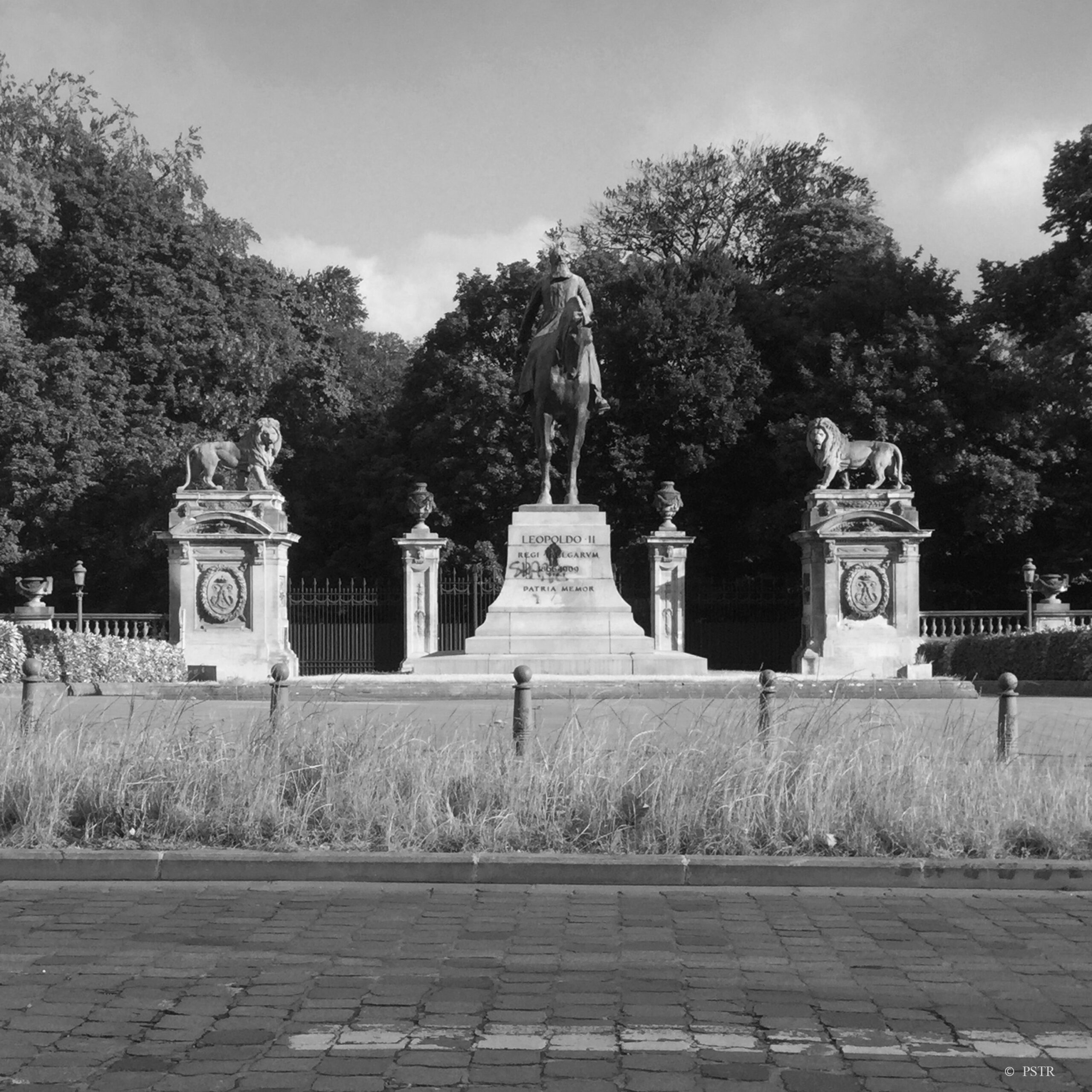
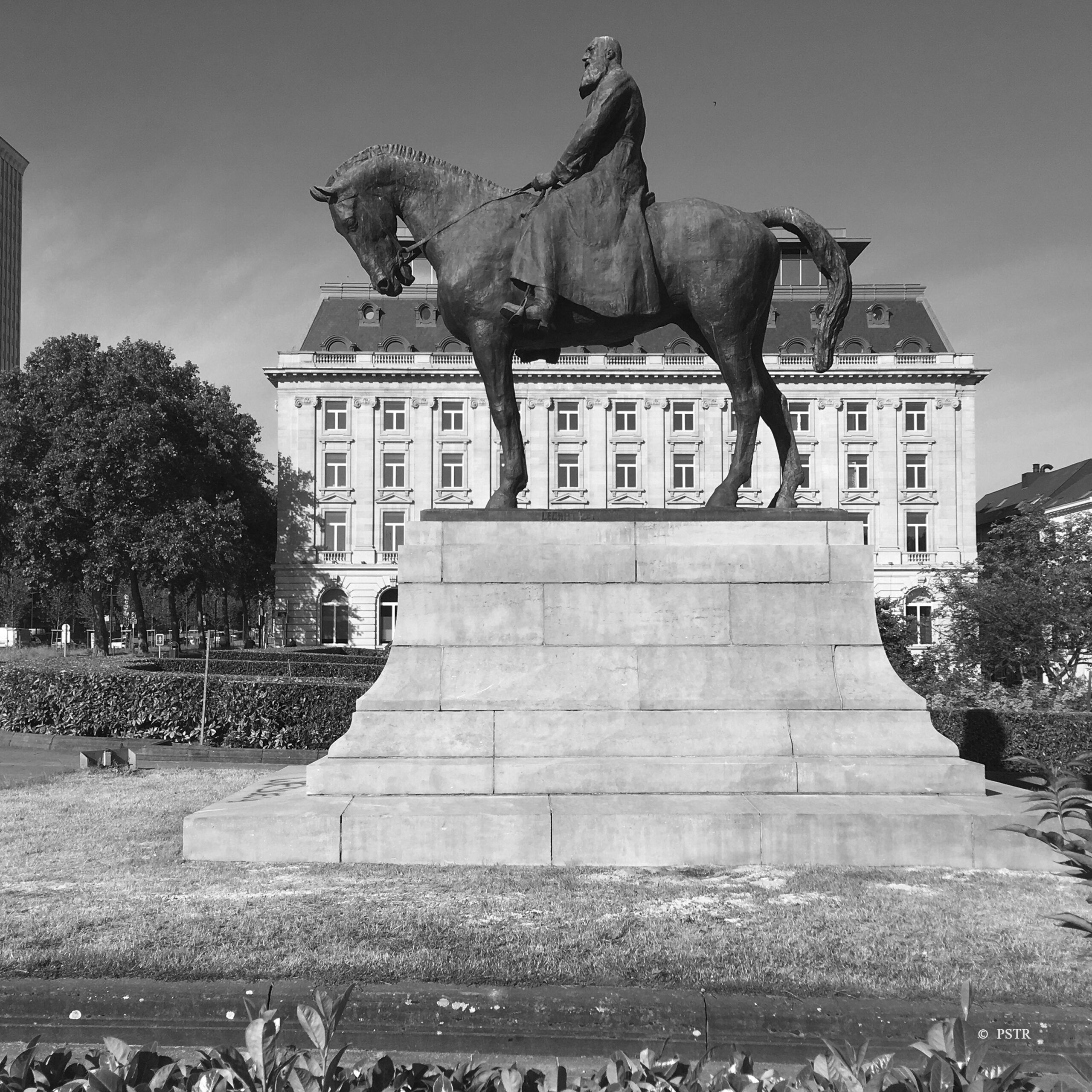
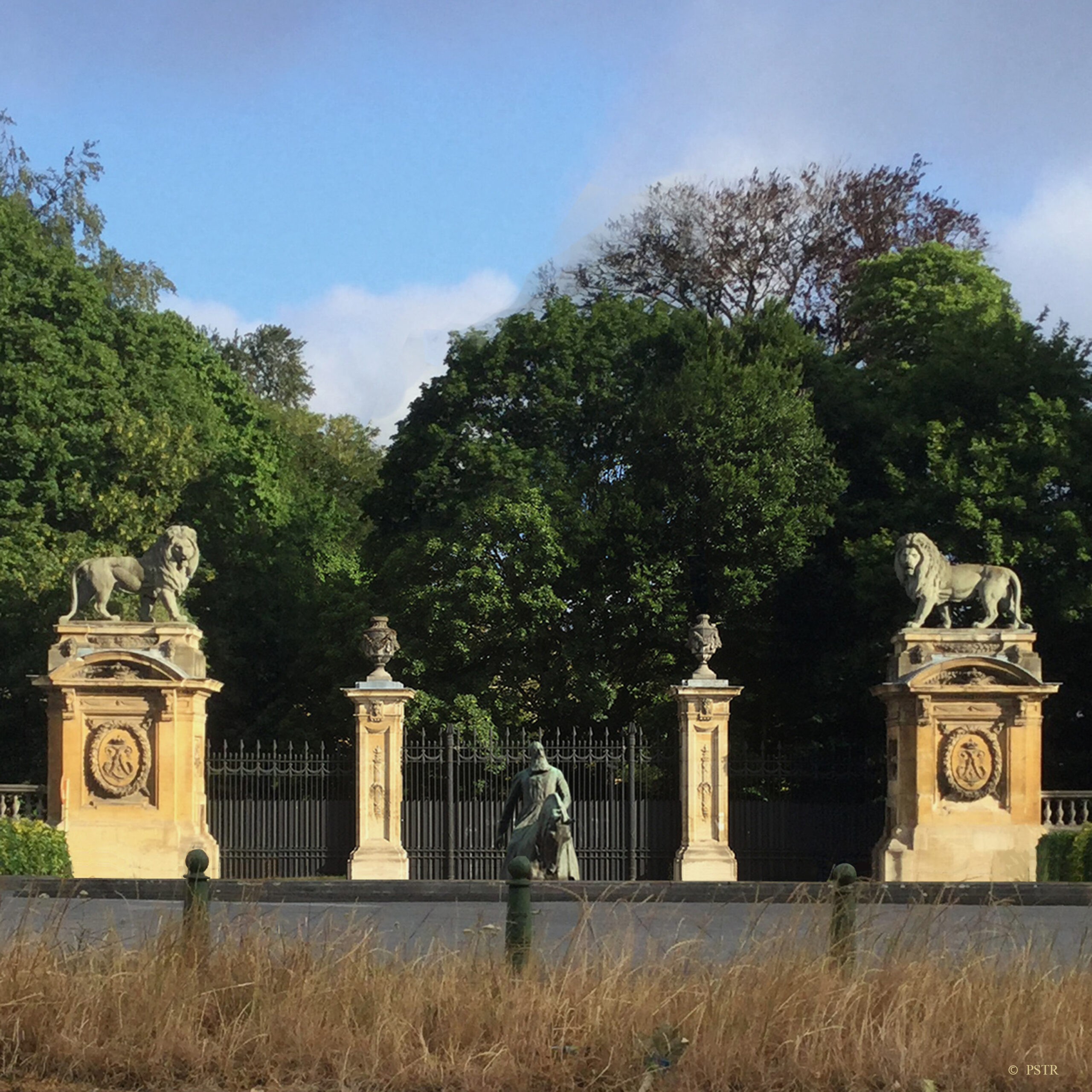
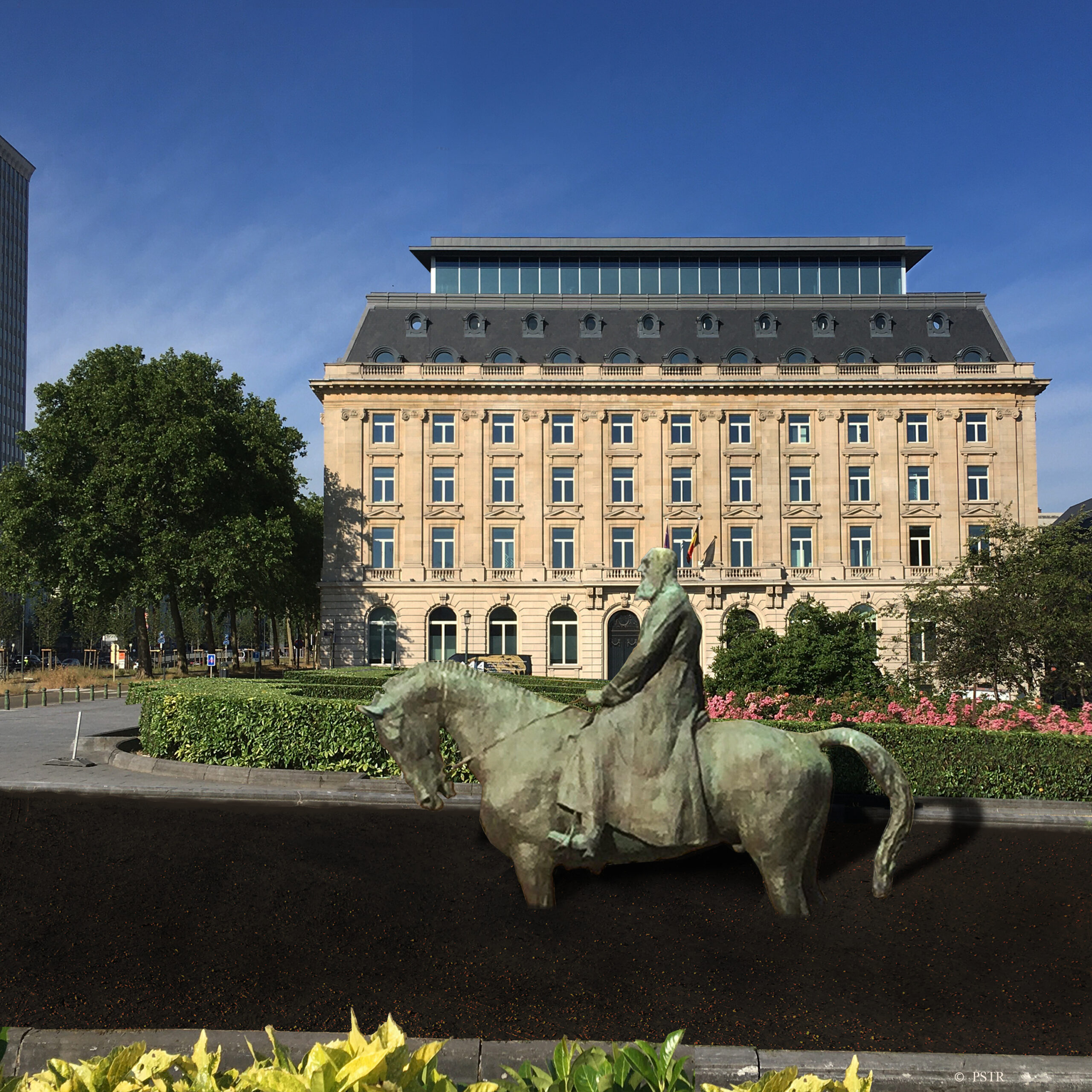
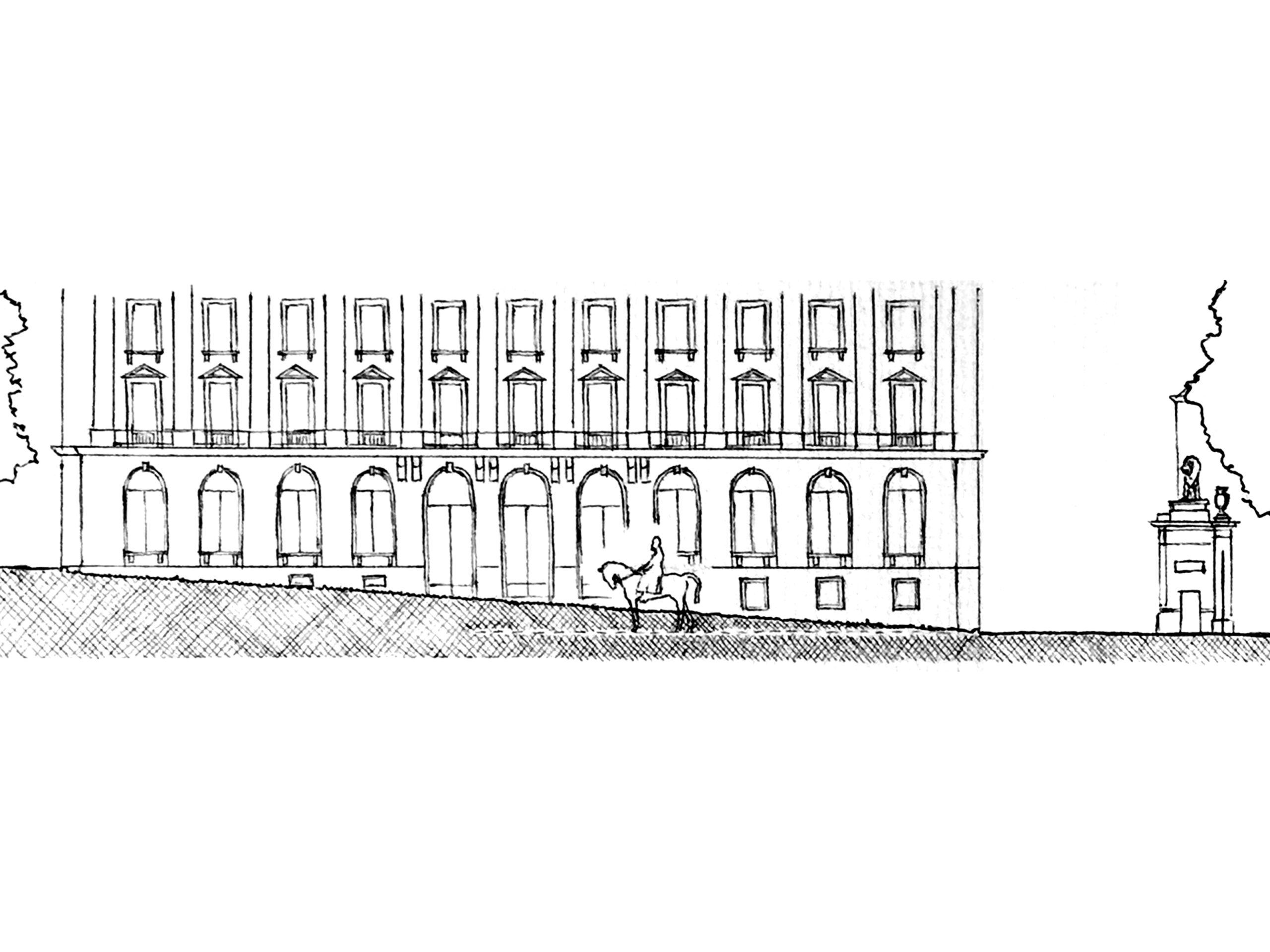
STATUE OF LEOPOLD II IN BRUSSELS - 1/3
Reconfiguration Proposal (2020)
Images: Miguel Paternostre ©
This project aims to divert the statue of Leopold II from its original function of glorification to express the pain caused by the colonial system. It seeks to make visible the suffering resulting from human choices and to invite the public to reflect on their repercussions in today’s world.
The pedestal is removed, and the equestrian statue partially buried: only the horse sinks into the ground while Leopold II, who never set foot in the Congo, remains above ground. In a new form of post-colonial monumentality, the royal figure come back to a human dimension, stimulating an intimate connection with the viewer.
STATUE OF LEOPOLD II IN BRUSSELS - 2/3
The surrounding grass is replaced by volcanic soil of Congolese origin: its provenance, its permeability, and deep black color endow the whole with strong symbolic power, while enhancing the bronze of the statue.
Currently frozen atop its pedestal, the statue appears to be here in motion. Aligned with the axis of the royal park gate, it seems to be leaving the place from which the king administered his colony. On this ascending slope, the horse's hooves are buried at the level of the estate's exit, suggesting that the king forced it to advance horizontally, against the logic of the terrain.
STATUE OF LEOPOLD II IN BRUSSELS - 3/3
The rare soil surrounding the rider evokes the countless victims and the lasting consequences of selfish acts. By ignoring our emotions and external signals, we generate suffering. The installation seeks to evoke a sense of weight and to encourage passersby to reflect on their own behavior.
This proposal was developed in the context of the first phase of the recommendations issued by the Brussels working group on decolonization. It could be complemented by a memorial at the scale of the square, designed as a place of memory and meditation, while reshaping the urban void between the boulevard and the historic center.





STATUE OF LEOPOLD II IN BRUSSELS - 1/3
Reconfiguration Proposal (2020)
Images: Miguel Paternostre ©
This project aims to divert the statue of Leopold II from its original function of glorification to express the pain caused by the colonial system. It seeks to make visible the suffering resulting from human choices and to invite the public to reflect on their repercussions in today’s world.
The pedestal is removed, and the equestrian statue partially buried: only the horse sinks into the ground while Leopold II, who never set foot in the Congo, remains above ground. In a new form of post-colonial monumentality, the royal figure come back to a human dimension, stimulating an intimate connection with the viewer.
STATUE OF LEOPOLD II IN BRUSSELS - 2/3
The surrounding grass is replaced by volcanic soil of Congolese origin: its provenance, its permeability, and deep black color endow the whole with strong symbolic power, while enhancing the bronze of the statue.
Currently frozen atop its pedestal, the statue appears to be here in motion. Aligned with the axis of the royal park gate, it seems to be leaving the place from which the king administered his colony. On this ascending slope, the horse's hooves are buried at the level of the estate's exit, suggesting that the king forced it to advance horizontally, against the logic of the terrain.
STATUE OF LEOPOLD II IN BRUSSELS - 3/3
The rare soil surrounding the rider evokes the countless victims and the lasting consequences of selfish acts. By ignoring our emotions and external signals, we generate suffering. The installation seeks to evoke a sense of weight and to encourage passersby to reflect on their own behavior.
This proposal was developed in the context of the first phase of the recommendations issued by the Brussels working group on decolonization. It could be complemented by a memorial at the scale of the square, designed as a place of memory and meditation, while reshaping the urban void between the boulevard and the historic center.